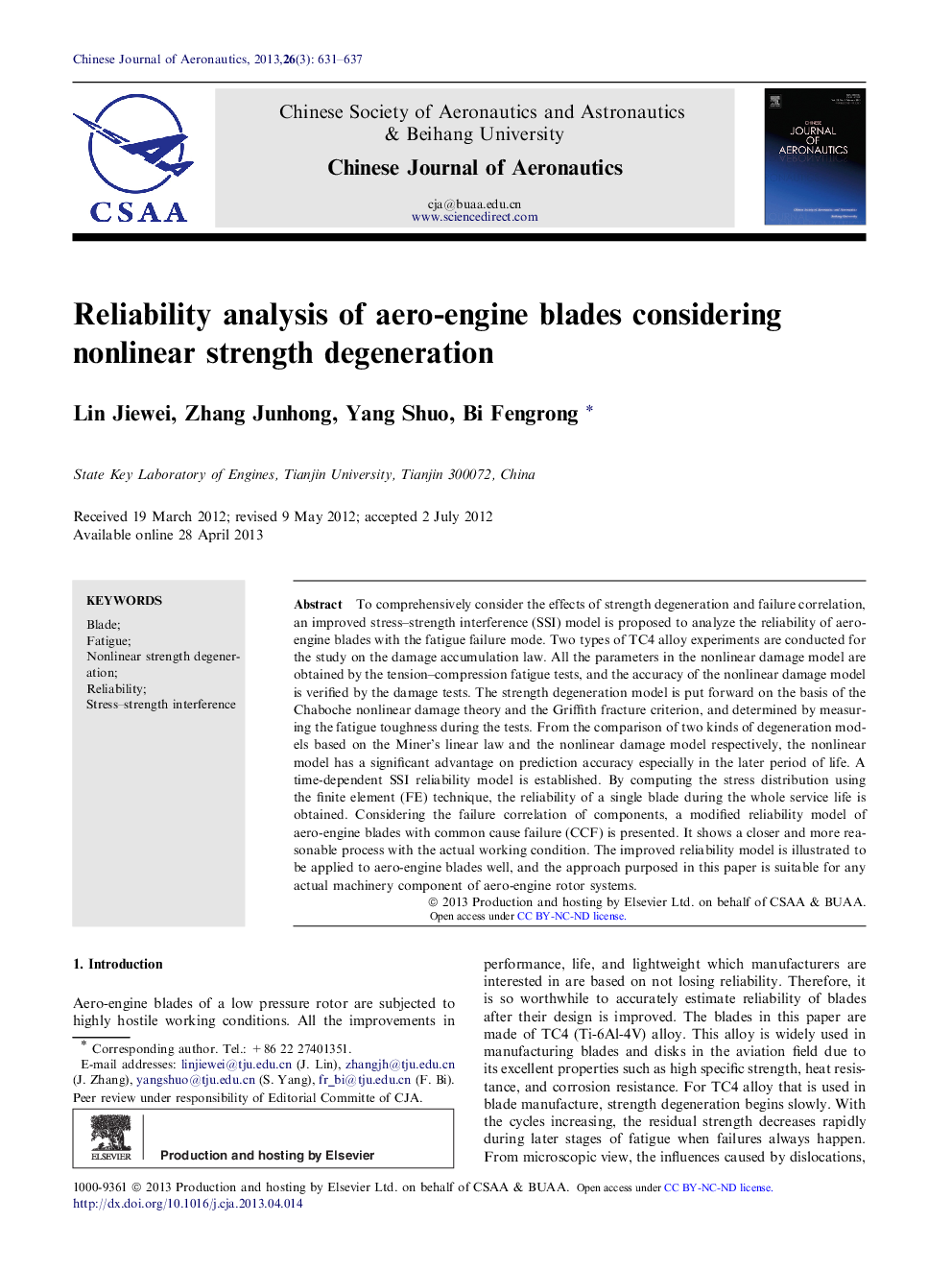| Article ID | Journal | Published Year | Pages | File Type |
|---|---|---|---|---|
| 755299 | Chinese Journal of Aeronautics | 2013 | 7 Pages |
To comprehensively consider the effects of strength degeneration and failure correlation, an improved stress–strength interference (SSI) model is proposed to analyze the reliability of aero-engine blades with the fatigue failure mode. Two types of TC4 alloy experiments are conducted for the study on the damage accumulation law. All the parameters in the nonlinear damage model are obtained by the tension–compression fatigue tests, and the accuracy of the nonlinear damage model is verified by the damage tests. The strength degeneration model is put forward on the basis of the Chaboche nonlinear damage theory and the Griffith fracture criterion, and determined by measuring the fatigue toughness during the tests. From the comparison of two kinds of degeneration models based on the Miner’s linear law and the nonlinear damage model respectively, the nonlinear model has a significant advantage on prediction accuracy especially in the later period of life. A time-dependent SSI reliability model is established. By computing the stress distribution using the finite element (FE) technique, the reliability of a single blade during the whole service life is obtained. Considering the failure correlation of components, a modified reliability model of aero-engine blades with common cause failure (CCF) is presented. It shows a closer and more reasonable process with the actual working condition. The improved reliability model is illustrated to be applied to aero-engine blades well, and the approach purposed in this paper is suitable for any actual machinery component of aero-engine rotor systems.
